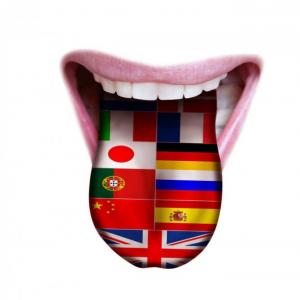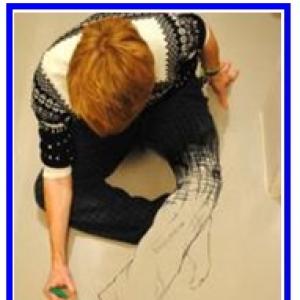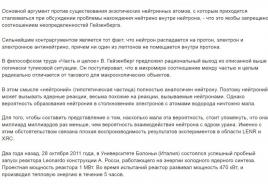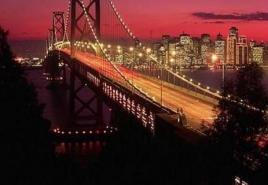Why Stalin was buried from the mausoleum. Secret funeral of Stalin
Late in the evening of October 31, 1961, when the entire Anglo-Saxon world was celebrating Halloween, an event was held on Red Square in Moscow, which absolutely fit into the context of the "alien" holiday. Stalin's body was carried out of the mausoleum.
Why were you in such a hurry?
The decision to remove the body of the leader was made the day before, on October 30, at the close of the congress of the Communist Party. However, it remains a mystery why it was implemented in record time - in just a day? Formally, the initiators of the removal of the body were the workers of the Leningrad Kirov Machine-Building Plant, and a certain delegate I. Spiridonov, on behalf of the Leningrad Party organization, announced it to the congress.
The decision was taken unanimously. In the morning, the information was published in the Pravda newspaper. Probably, the authorities thus prevented a negative public reaction, but there was no popular unrest, and they decided to start the reburial in the evening.
Perhaps Nikita Khrushchev, the then head of the party, remembering that "the Russians take a long time harnessing," decided to seize the moment - until the citizens "went quickly." But this is unlikely. Most likely, the decision to remove Stalin from the mausoleum and the exact date of reburial were determined long before the October Congress of the Central Committee of the CPSU
Why on the last day of October?
There may be several versions here. The most exotic one is about the connection between the removal of Stalin's body and the Western holiday of Halloween. In 1960, the famous performance of Nikita Khrushchev "with a boot" took place in the USA, the head of the USSR learned about the Halloween holiday. The inquisitive Nikita Sergeevich simply could not help but notice the pumpkin abundance in New York in mid-October and take an interest in the nature of the phenomenon. Probably, having learned about the connection between Halloween and evil spirits, he decided to transfer it to Soviet soil - just for one day.
Another version looks more plausible. On October 30, 1961, on the eve of the removal of the leader's body from the mausoleum, the most powerful hydrogen bomb in history was tested in the USSR. Most likely, the leaders of the Soviet Union decided to link the two events: in the explosion of the "Tsar Bomb" they saw an excellent symbolic ritual - farewell to the cult of Stalin.
Why was they reburied at the Kremlin wall?
Years later, the participants in the operation to carry Joseph Vissarionovich out of the mausoleum recalled that the cemetery of the Novodevichy Convent was originally chosen as the place of reburial. This idea was abandoned a few hours before the burial. Allegedly, the authorities were worried that Stalin could later be dug up by the leader's ardent admirers, of whom there were millions in the USSR. However, it is very hard to believe that the main officials of the country were guided by a careful attitude towards the body of the leader. Then what is the reason?
I must say that the burial of Stalin at the Kremlin wall took place in extreme secrecy - about 30 people took part in the operation itself. Moreover, relatives were not invited to the farewell ceremony.
In other words, there is no one to confirm that it was Joseph Vissarionovich who was buried near the Kremlin, except for “secret” soldiers and officers with high officials.
After the reburial, rumors spread in Moscow that Khrushchev buried not the body of the “great helmsman” at the walls of the Kremlin, but someone else, or an empty coffin. Stalin's body was allegedly burned in the crematorium. Of course, it is no longer possible to check these legends.
Why was the reburial accompanied by a parade?
On the evening of October 31, 1961, Red Square was closed for a rehearsal of the parade scheduled for November 7.
When the participants in the operation to remove Stalin's body were swarming in the mausoleum, just a few dozen meters away from them brave Soviet soldiers marched, heavy military equipment hummed ...
At first glance, it seems that the combination of a parade rehearsal with a covert reburial operation looks quite logical. Allegedly, as the participants in the removal of the body recall, this was a good reason for the closure of Red Square. This looks a little naive, since late at night Red Square could hardly be called a very busy place - especially at a time when most people went to bed at nine or ten. And, of course, it is unlikely that the people became nervous about the blocking of the main square of the country, even in the daytime. Most likely, the reason was different. Probably, the party bosses of the Soviet Union again resorted to their favorite language of symbolism. The parade became a demonstrative act of strength and power in front of the dead tyrant "expelled" from the pyramid.
Why was all the gold removed from Stalin?
A participant in the reburial operation, the commander of a separate regiment, Fyodor Konev, recalls in his memoirs that in preparation for the reburial, the generalissimo's golden shoulder straps, the star of the Hero of Socialist Labor, were removed from Stalin and the gold buttons on his uniform were cut off, which were changed to brass. The nature of such a decision is completely incomprehensible - the highest officials of the USSR were not sorry for the gold! If the removal of shoulder straps and orders could still be attributed to a kind of dethronement act, but where are the buttons? Why create additional fuss with sewing on new, cheaper ones? Here we are dealing either with some very strange ritual, understandable only to its participants, or with the fact that the top officials of the state took the gold buttons from Stalin's service jacket as a trophy, a talisman.
Why was the mausoleum opened the next day?
It looks very strange. On the morning of November 1, a traditional queue lined up in front of the mausoleum. True, the inscription "Lenin-Stalin" that adorned the pyramid was covered with a cloth with the lonely surname of Vladimir Ilyich.
Why did the country's top officials, accustomed to insuring themselves even in trifles, decide to take a risk and let people into the mausoleum with the "lonely" Lenin? Moreover, according to eyewitnesses, Red Square was not even additionally reinforced by security.
Really, the party bosses were so sure of the cold-blooded reaction of the people. Stalin's absence did not actually cause a negative reaction or fermentation among the visitors, but who could then somehow predict this? Was it not a hydrogen bomb in the hands of the authorities that so humbled the hearts of Joseph Vissarionovich's admirers? The motives of statesmen and the secret of composure of the citizens of the USSR, the majority (and certainly those who were ready to stand in a three-hour queue in the mausoleum) who revered Stalin as the winner of the Great Patriotic War, we will definitely never figure out.
Why was the monument on Stalin's grave erected only 10 years later?
Immediately after the burial of Stalin's body, the grave was covered with a heavy marble slab over the years of the leader's life. She stayed in such a modest state for exactly 10 years, until in 1970 the slab was replaced by a bust of Joseph Vissarionovich by the sculptor Nikolai Tomsky. Why exactly then - not earlier and not later? After all, Nikita Khrushchev, the main destroyer of the Stalin cult, was removed back in 1964. And here the answer must be sought in the once fraternal China. Since the late 1960s, the USSR and the PRC were on the brink of a grandiose war. China's dissatisfaction with the suppression of the Prague Spring by Soviet troops, after which the leaders of the Celestial Empire declared that the Soviet Union had taken the path of “socialist imperialism,” and three border conflicts between the two superpowers in 1969, forced the Soviet authorities to seek ways to normalize relations. And one of the methods of pacifying China, party leaders saw in the "partial rehabilitation" of Stalin, whose figure in the PRC remained a cult. The head of the Council of Ministers of the USSR, Alexei Kosygin, even promised the head of the Chinese government to return the name to Stalingrad in exchange for loyalty, and to coincide with the 90th birthday of Joseph Vissarionovich, but at the last moment the Soviet leadership played back. Ultimately, the authorities decided to confine themselves to unveiling a monument at Stalin's grave. True, such half-measures did not satisfy the Chinese, and in the same 1970 a crowd of Red Guards, "hegemons" of the cultural revolution in China, blocked the Soviet embassy in Beijing, not stopping chanting for several days: "Long live Comrade Stalin!"
In the USSR, monuments to the leader of the party who died in 1953 continued to stand, but after 2-3 years the Soviet leadership caught on and gave the order to start demolishing them. And they were different - from the simplest typical samples to huge statues and bas-reliefs carved by prisoners on the rocky Kolyma shores. But the most important monument to the deceased tyrant was in the capital, Moscow, in its very heart. Stalin in the Mausoleum lay next to the unshakable, indestructible and cornerstone shrine, the mummy of the creator of the world's first socialist state, where he himself placed it. For the champion of the Leninist norms of leadership, First Secretary NS Khrushchev, this neighborhood was unbearable.
Mausoleum and Lenin
In order to understand the Soviet relic symbols, some retrospection to the beginning of 1924 is necessary, it is necessary to analyze the events that followed the death of V. I. Lenin.
Since the leader of the Bolshevik Party was an atheist, he treated the ritual side of life accordingly, that is, almost nothing.
Of course, during the years of the Civil War, a certain set of rituals was formed that accompanied the farewells to the fallen fighters for the people's happiness. The funeral procedure included, as a rule, the bowing of the red banners, the performance of the party anthem - "Internationale" by the brass bands, speeches (sometimes politically illiterate) of various military (and not sober) comrades (not always sober), accompanied by oaths of loyalty and promises to take revenge on the "counter" ...
In the case of such a magnificent figure as Lenin, this was clearly not enough. And then a specialist with incomplete seminary education, Comrade Stalin, joined in the organization of the funeral ceremony. In the Mausoleum, first made of planks, a coffin was erected, and everyone could look at the deceased leader of all the proletarians of the world. Since there were a lot of them, the time of the people's access to the body was extended, and then it was decided to preserve the corpse by embalming. This was done with a great delay.

Mausoleum science
During its stay in the Mausoleum of Lenin's body, Soviet science made a large-scale leap in a unique direction. And before that there were cases of successful embalming of corpses, in some countries in ancient times people tried to preserve the bodily shells of their rulers and prominent figures, but these skills, having reached the level of art, were kept secret, and partly for this reason were lost.
In recent history, a case is known related to embalming according to the technology developed by the great surgeon Pirogov and applied to him after his death. However, this method also had, apparently, many subtleties, it was not easy to reproduce it. Therefore, Soviet anatomists had to invent their own method, which included forcedly not only the operation to preserve the tissues, but also their partial restoration. Stalin lay in the Mausoleum for almost nine years, his corpse was also embalmed, and specialists working in the special laboratory dealing with conservation issues reasonably assume that even today, after decades of lying in an ordinary grave, it is possible that the body of the second Soviet leader is in a completely bearable form. Although with some reservations.
Relics forever?
The question of whether it is advisable to expose a dead body to the broad masses today lies rather in the moral and ethical than in the political plane. The number of people for whom the name of Lenin remains holy is not very large today, although it is also impossible to assert that there are none at all.
No less significant relic for many Soviet people was the body of Joseph Vissarionovich. From 1953 to 1962, they knew that both great rulers, comrades-in-arms and revolutionary Lenin and Stalin were in the Mausoleum. Photos of their bodies were almost never published anywhere, but anyone who came to Moscow and stood in a long line could look at them. It seemed that now it will always be so.
Excesses

During the years of Stalin's rule, the "new man" necessary for the complete victory of communism was never created. But another type appeared, personifying the leader of the Soviet type. This character always agreed with the opinion of the head of the party, and if he hesitated, then certainly along with the general line.
Ironically, it was Stalin's management methods that were applied when deciding to exclude the corpse of the general secretary who violates Lenin's norms from the list of official Soviet shrines. Not all those who supported the workers of the Kirov plant were inwardly in agreement with him. When Stalin was carried out of the Mausoleum, some members of the reburial commission shed tears. Several handfuls of earth were thrown into the open mouth of the grave. It was bold, but before the protest, and even more so the riot, did not last. The officers who were part of the funeral team behaved much more courageously. They refused to cut off the buttons made of gold from JV Stalin's tunic, on which the First himself insisted, and were demoted. No other excesses happened.

"Initiative from below"
The formal initiator of the removal of Stalin's body from the Mausoleum is considered to be the first secretary of the Leningrad regional party organization, Comrade Spiridonov IV But he acted according to the scheme familiar to the nomenklatura, according to which the communists simply supported the impulse of the working masses and, of course, led it.
A meeting of Kirov workers most likely took place, but the agenda and the decision were undoubtedly prepared in advance and approved "at the very top." The historical background against which Stalin was taken out of the Mausoleum is important.
The year 1961 was marked by many events in the life of the whole country. The next party congress was coming to an end, XXII. Internal affairs were not in the best way, prices were rising. The broad masses of workers willingly and unwillingly compared the Khrushchev era with the previous era, in which, on the contrary, they were reduced. People remember good things better than bad things. Even the first manned flight into space and the testing of the most powerful hydrogen charge could only partially compensate for the lack of meat and sausages in stores.
Night and mystery

The removal of Stalin from the Mausoleum took place immediately after the approval vote of the Congress. It took place simultaneously with the reburial near where the grave had already been dug in advance, in the light of searchlights directed at it.
Plywood shields were also installed ahead of time, protecting the participants in the process, both living and dead, from prying eyes. The option with a funeral at the Novodevichy cemetery was rejected in order to avoid unpredictable consequences. Everything was possible, from a demonstrative pilgrimage to the kidnapping of the coffin.
When Stalin was taken out of the Mausoleum, all the precious elements in the form of the generalissimo's gold shoulder straps, the star of the Hero of Socialist Labor and the notorious buttons were removed from his uniform, and brass buttons were hastily sewn on instead. History is silent about who did it.
The militiamen explained the prohibition of passage to Red Square for the few nocturnal passers-by by the fact that a parade in honor of November 7 was being prepared.

The last parade
On the night when Stalin was carried out of the Mausoleum, unknowingly, he was greeted by Soviet troops. The caterpillars of tanks rumbled over the cobblestones, the engines of formidable combat vehicles roared, and the chased step of the infantrymen was reflected from the walls of the Kremlin. The rehearsal did take place, but for the Supreme Commander-in-Chief, who died seven years ago, it was a real parade.
In the meantime, the cladding above the entrance was already being removed, in its place the still-preserved Stalin inscription with one name was already being prepared, but its installation took time, and the empty space was simply covered with a piece of cloth with the word "LENIN". In the morning, the main tomb of the USSR was planned to be opened for visiting. It was difficult to predict the reaction of the population, although the most influential Soviet organization, the KGB, tried to solve this problem.
Headstone

The monument was not for a long time, only a heavy horizontal slab with laconically embossed letters and numbers, which also meant the dates of the boundaries of life. The tombstone in the form of a sculptural bust by N. Tomsky appeared almost a decade after Stalin was carried out of the Mausoleum.
1970 was a difficult year for Soviet-Chinese relations. In the PRC, the Brezhnev leadership was considered revisionist, the deceased leader was revered on a par with Mao and was outraged by the disrespectful attitude towards his memory. But in the USSR itself, by the end of the sixties, a critical attitude towards Stalin gave way to a "balanced" approach to history, expressed by the recognition that there was a cult, of course, but there was also a personality.

Murmur
Fears that, having learned about the absence of Comrade Stalin's ashes in the mausoleum, the people would have to be pacified, were in vain. Undesirable conversations, of course, went, but they did not go beyond the usual philistine murmur.
State security officials noted the appearance of political jokes, the essence of which boiled down to assumptions about the place of the future burial of the First Secretary Khrushchev. “It’s Nikita with his cot, comrade Lenin,” - Stalin allegedly said to Vladimir Ilyich with his famous Caucasian accent when he heard a crash at the back doors of the Mausoleum.
There were reasons for dissatisfaction, they led to many conflicts, the most famous of which was the Novocherkassk uprising, which happened soon, but these unrest had nothing to do with the displacement of the dead body, the people took the change that had taken place on Red Square rather passively. Fans of harsh methods in the person of the "hard-stone" communists laid flowers every year on March 5 and December 21 behind the mausoleum, where Stalin's grave was surrounded by other burial places of prominent party leaders. The protests were limited to this.
Memory and history

From the point of view of an ordinary citizen of Russia who has grown up in the past two decades, much of this story may be incomprehensible. For example, what is the fundamental difference between the two inhabitants of the tomb, which still stands today on Red Square?
In the year when Stalin was carried out of the Mausoleum, the main idea that the party leadership tried (and not without success) to convey to the consciousness of the broad masses was the idea that Lenin had planned everything correctly, but the leaders who came after him distorted his plan. And only now, when dear Nikita Sergeevich has finally come to power, everything will go as it should. Here he is, a real Leninist.
A modern person who knows and understands the nature of communism often does not understand why Stalin was removed from the Mausoleum, but Lenin was not. The answer is simple, it's all about the culture and attitude to the history of your own country. It is simply necessary to respect the beliefs of those who, due to their advanced years, cannot and do not want to change them. In Russia and beyond its borders, very worthy people still live today, adhering, nevertheless, to communist ideals. And they must be reckoned with if we want our descendants to respect us.
But the most important monument to the deceased tyrant was in the capital, Moscow, in its very heart. Stalin in the Mausoleum lay next to the unshakable, indestructible and cornerstone shrine, the mummy of the creator of the world's first socialist state, where he himself placed it. For the champion of the Leninist norms of the leadership of the First Secretary of the CPSU Central Committee NS Khrushchev, this neighborhood was unbearable.
In order to understand the Soviet relic symbols, some retrospection to the beginning of 1924 is necessary, it is necessary to analyze the events that followed the death of V. I. Lenin.
Since the leader of the Bolshevik Party was an atheist, he treated the ritual side of life accordingly, that is, almost nothing.
Of course, during the years of the Civil War, a certain set of rituals was formed that accompanied the farewells to the fallen fighters for the people's happiness. The funeral procedure included, as a rule, the bowing of the red banners, the performance of the party anthem - "Internationale" by the brass bands, speeches (sometimes politically illiterate) of various military (and not sober) comrades (not always sober), accompanied by oaths of loyalty and promises to take revenge on the "counter" ...
In the case of such a magnificent figure as Lenin, this was clearly not enough. And then a specialist with incomplete seminary education, Comrade Stalin, joined in the organization of the funeral ceremony. In the Mausoleum, first made of planks, a coffin was erected, and everyone could look at the deceased leader of all the proletarians of the world. Since there were a lot of them, the time of the people's access to the body was extended, and then it was decided to preserve the corpse by embalming. This was done with a great delay.

Mausoleum science
During its stay in the Mausoleum of Lenin's body, Soviet science made a large-scale leap in a unique direction. And before that there were cases of successful embalming of corpses, in some countries in ancient times people tried to preserve the bodily shells of their rulers and prominent figures, but these skills, having reached the level of art, were kept secret, and partly for this reason were lost.
In recent history, a case is known related to embalming according to the technology developed by the great surgeon Pirogov and applied to him after his death. However, this method also had, apparently, many subtleties, it was not easy to reproduce it. Therefore, Soviet anatomists had to invent their own method, which included forcedly not only an operation to preserve tissues, but also their partial restoration. Stalin lay in the Mausoleum for almost nine years, his corpse was also embalmed, and specialists working in the special laboratory dealing with the preservation of Lenin's mummy reasonably assume that even today, after decades of lying in an ordinary grave, it is possible that the body of the second Soviet leader is in a perfectly tolerable form. Although with some reservations.

Relics forever?
The question of whether it is advisable to expose a dead body to the broad masses today lies rather in the moral and ethical than in the political plane. The number of people for whom the name of Lenin remains holy is not very large today, although it is also impossible to assert that there are none at all.
No less significant relic for many Soviet people was the body of Joseph Vissarionovich. From 1953 to 1962, they knew that both great rulers, comrades-in-arms and revolutionary Lenin and Stalin were in the Mausoleum. Photos of their bodies were almost never published anywhere, but anyone who came to Moscow and stood in a long line could look at them. It seemed that now it will always be so.

Excesses
During the years of Stalin's rule, the "new man" necessary for the complete victory of communism was never created. But another type appeared, personifying the leader of the Soviet type. This character always agreed with the opinion of the head of the party, and if he hesitated, then certainly along with the general line.
Ironically, it was Stalin's management methods that were applied when deciding to exclude the corpse of the general secretary who violates Lenin's norms from the list of official Soviet shrines. Not all the workers of the Kirov plant who supported this initiative were inwardly agree with him. When Stalin was carried out of the Mausoleum, some members of the reburial commission shed tears. Several handfuls of earth were thrown into the open mouth of the grave. It was bold, but it did not reach a protest, let alone a riot. The officers who were part of the funeral team behaved much more courageously. They refused to cut off the buttons made of gold from JV Stalin's tunic, on which the First himself insisted, and were demoted. No other excesses happened.

"Initiative from below"
The formal initiator of the removal of Stalin's body from the Mausoleum is considered to be the first secretary of the Leningrad regional party organization, Comrade Spiridonov IV But he acted according to the scheme familiar to the nomenklatura, according to which the communists simply supported the impulse of the working masses and, of course, led it.
A meeting of Kirov workers most likely took place, but the agenda and the decision were undoubtedly prepared in advance and approved "at the very top." The historical background against which Stalin was taken out of the Mausoleum is important.
The year 1961 was marked by many events in the life of the whole country. The next party congress was coming to an end, XXII. Internal affairs were not in the best way, prices were rising. The broad masses of workers willingly and unwillingly compared the Khrushchev era with the previous era, in which, on the contrary, they were reduced. People remember good things better than bad things. Even the first manned flight into space and the testing of the most powerful hydrogen charge could only partially compensate for the lack of meat and sausages in stores.

The removal of Stalin from the Mausoleum took place at night, immediately after the approval vote of the Congress. It took place simultaneously with the reburial near the Kremlin wall, where the grave had already been dug in advance, under the light of searchlights directed at it.
Plywood shields were also installed ahead of time, protecting the participants in the process, both living and dead, from prying eyes. The option with a funeral at the Novodevichy cemetery was rejected in order to avoid unpredictable consequences. Everything was possible, from a demonstrative pilgrimage to the kidnapping of the coffin.
When Stalin was taken out of the Mausoleum, all the precious elements in the form of the generalissimo's gold shoulder straps, the star of the Hero of Socialist Labor and the notorious buttons were removed from his uniform, and brass buttons were hastily sewn on instead. History is silent about who did it.
The militiamen explained the prohibition of passage to Red Square for the few nocturnal passers-by by the fact that a parade in honor of November 7 was being prepared.

The last parade
On the night when Stalin was carried out of the Mausoleum, unknowingly, he was greeted by Soviet troops. The caterpillars of tanks rumbled over the cobblestones, the engines of formidable combat vehicles roared, and the chased step of the infantrymen was reflected from the walls of the Kremlin. The rehearsal did take place, but for the Supreme Commander-in-Chief, who died seven years ago, it was a real parade.
In the meantime, the cladding above the entrance was already being removed, in its place the still-preserved Stalin inscription with one name was already being prepared, but its installation took time, and the empty space was simply covered with a piece of cloth with the word "LENIN". In the morning, the main tomb of the USSR was planned to be opened for visiting. It was difficult to predict the reaction of the population, although the most influential Soviet organization, the KGB, tried to solve this problem.

Headstone
The monument was not for a long time, only a heavy horizontal slab with laconically embossed letters and numbers, meaning the name, party pseudonym and dates of the boundaries of life. The tombstone in the form of a sculptural bust by N. Tomsky appeared almost a decade after Stalin was carried out of the Mausoleum.
1970 was a difficult year for Soviet-Chinese relations. In the PRC, the Brezhnev leadership was considered revisionist, the deceased leader was revered on a par with Mao and was outraged by the disrespectful attitude towards his memory. But in the USSR itself, by the end of the sixties, a critical attitude towards Stalin gave way to a "balanced" approach to history, expressed by the recognition that there was a cult, of course, but there was also a personality.

Murmur
Fears that, having learned about the absence of Comrade Stalin's ashes in the mausoleum, the people would have to be pacified, were in vain. Undesirable conversations, of course, went, but they did not go beyond the usual philistine murmur.
State security officials noted the appearance of political jokes, the essence of which boiled down to assumptions about the place of the future burial of the First Secretary Khrushchev. “It’s Nikita with his cot, comrade Lenin,” - Stalin allegedly said to Vladimir Ilyich with his famous Caucasian accent when he heard a crash at the back doors of the Mausoleum.
There were reasons for dissatisfaction, they led to many conflicts, the most famous of which was the Novocherkassk uprising, which happened soon, but these unrest had nothing to do with the displacement of the dead body, the people took the change that had taken place on Red Square rather passively. Fans of harsh methods in the person of the "hard-stone" communists laid flowers every year on March 5 and December 21 behind the mausoleum, where Stalin's grave was surrounded by other burial places of prominent party leaders. The protests were limited to this.

Memory and history
From the point of view of an ordinary citizen of Russia who has grown up in the past two decades, much of this story may be incomprehensible. For example, what is the fundamental difference between the two inhabitants of the tomb, which still stands today on Red Square?
In the year when Stalin was carried out of the Mausoleum, the main idea that the party leadership tried (and not without success) to convey to the consciousness of the broad masses was the idea that Lenin had planned everything correctly, but the leaders who came after him distorted his plan. And only now, when dear Nikita Sergeevich has finally come to power, everything will go as it should. Here he is, a real Leninist.
A modern person who knows and understands the nature of communism often does not understand why Stalin was removed from the Mausoleum, but Lenin was not. The answer is simple, it's all about the culture and attitude to the history of your own country. It is simply necessary to respect the beliefs of those who, due to their advanced years, cannot and do not want to change them. In Russia and beyond its borders, very worthy people still live today, adhering, nevertheless, to communist ideals. And they must be reckoned with if we want our descendants to respect us.
Joseph Stalin died in early March 1953 at his dacha near Moscow. It was decided to embalm the body of the leader of the peoples and place it in the mausoleum next to Vladimir Lenin. What happened next?
Two sarcophagi
Stalin's body was taken to a special laboratory for a procedure similar to the manipulations with Lenin's body. Tissue fixation and a set of embalming procedures were performed.
On March 9, after parting at the Column Hall of the House of Unions, the sarcophagus with Stalin's body was installed in the mausoleum next to Lenin. From that moment on, one of the main buildings of the Soviet era became known as the "Mausoleum of V. I. Lenin and I. V. Stalin."
The interior of the building has remained practically unchanged. The same dim light, the decoration of the hall in red and black tones. Only now the guard of honor stood at two identical sarcophagi.
Changes in appearance
Even before the sarcophagus with the leader of the peoples was installed in the mausoleum, the appearance of the multi-ton monolithic slab on the front facade of the building was changed, where the inscription "Lenin" flaunted in large letters. At that time it was not possible to find a block of the same size, so the old inscription was covered with pink resin, and two - "Lenin" and "Stalin" were already applied to the resulting layer with black paint.
But this did not solve the problem. In winter, in severe frost, the original inscription "Lenin" was clearly visible on the slab through a new layer. As a result, the former monolith was replaced only seven years after the death of the leader of the peoples, in 1960. [C-BLOCK]
The block with the inscription "Lenin" was originally intended to be sawed for new gravestones, but Colonel Moshkov, who was then the commandant of the mausoleum, strongly opposed. As a result, the slab was taken to Vodniki near Moscow and put into storage in one of the premises of a stone processing plant.
Also, the staff of workers serving the mausoleum was significantly increased. Before the beginning of the Great Patriotic War, there were 30 people there, many of them are narrow-profile scientists-specialists. Now it was necessary to monitor and maintain in a "conditioned" state not only the body of the first, but also the second leader. This required more hands.
Outshine Lenin
Stalin, given his rank of generalissimo, was put in a sarcophagus in military uniform. Several medals were attached to the leader's tunic - the "Gold Star" of the Hero of the USSR, Hero of Socialist Labor, and planks to them. As the expert-embalmer Yuri Romakov recalled, the leader of the peoples actually eclipsed Vladimir Ilyich, who from that moment seemed to be in the shadow of his "student".
The fact is that Lenin was in a very modest suit, with a small badge of a CEC member. Whereas Stalin - in a luxurious uniform with gold buttons and shoulder straps, and besides with awards. Stalin looked great, Romakov noted.
Another curious detail is that during his stay in Stalin's mausoleum, not a single attempt was made on his sarcophagus. At the same time, a hand was raised against Ilyich several times.
Into a humble grave
The new Soviet leaders planned to build a special Pantheon, where the bodies of the two leaders would be transferred. But this intention was eventually abandoned. And the de-Stalinization that began under Nikita Khrushchev led to the fact that in the party elite the question of the expediency of finding Joseph Vissarionovich next to Vladimir Ilyich was seriously raised.
The final decision in the Politburo was made on October 30, 1961 - to remove Stalin from the mausoleum. But they decided to arrange everything as if it were a popular initiative. To this end, the Kirov workers in a collective appeal declared that it would be good to leave Ilyich alone.
Work on the removal of Stalin's body began late in the evening of October 31. The leader of the peoples was stripped, the gold buttons and shoulder straps were cut off from his uniform, orders and medals were removed. The body was covered with an ordinary dark cloth, the coffin was closed and lowered into a hastily dug grave next to the mausoleum. An unremarkable marble slab was placed on top. The monument at the burial site appeared later. On the same night, a slab with the inscription "Lenin" returned from Vodniki to its original place.
More than half a century ago - October 31, 1961 - the body of Joseph Vissarionovich Stalin was removed from the Mausoleum on Red Square
We have repeatedly touched upon a very controversial and complex figure, talked about his early years, his revolutionary career, participation in and other aspects of the personality of, perhaps, the most famous USSR Secretary General. Today we will touch upon another important and interesting question: how did his heirs fight the body of the late, once all-powerful Stalin? We will invite the reader to answer the questions himself why it was necessary to pull out the body of the leader under cover of night, why such secrecy was needed, and how Soviet citizens reacted to this news.
Stalin's death
On March 1, 1953, a security guard finds Stalin lying on the floor at his dacha. Doctors who arrived the next day diagnosed him with paralysis of the right side of his body. Until March 4, reports on the state of health of Joseph Vissarionovich were published in newspapers and broadcast on the radio, and on March 5 he died.
Source: navsource.narod.ru
On March 6, a farewell began at the House of Unions, which lasted three days. Hundreds of thousands of ordinary people went to say goodbye to Stalin. At night, cars with searchlights were on duty in the streets to illuminate the way for huge columns of people. Not without a crush.

Source: therichest.com
Only on March 9, Stalin's body was placed in the Mausoleum, next to Lenin. Iosif Vissarionovich was in his everyday uniform with awards. The formation of troops and workers took place on Red Square, the top leaders of the USSR, representatives of the fraternal Communist Parties and foreign guests were present. From that day on, the tomb became known as the Mausoleum of V.I. Lenin and I.V. Stalin.
Fighting body and cult
The lion died of old age. Jackals
The crowd came running to tear the body,
Squealing heart-rendingly with all the kagal:
“The lion is defeated! Everyone should know:
That we are his for years
They led to shameful death!
What is it with our labors
It is erased forever from the face of the earth! ... "
Stalin's body was not destined to lie in the Mausoleum for a long time. Already in 1956, during the so-called discussions on debunking the cult of Stalin's personality and during the fateful XX Congress of the CPSU, former associates and subordinates of Joseph Vissarionovich began to put forward ideas about taking his body out of the Mausoleum. A campaign to rewrite history began in the USSR.

Source: ru24ru.net
And so, on the eve of the XXII Congress, groups of Leningrad workers from the Kirov and Nevsky factories came up with a written initiative to transfer the body. Before the Central Committee, their initiative was announced by the head of the Leningrad regional party committee, Ivan Spiridonov. And the delegates to the congress happily supported the "inexpediency" of further keeping the sarcophagus with Stalin's body in the Mausoleum. It was October 30, and on the 31st the military began to carry out the task.
At night, under the pretext of preparing for the November 7 parade, the troops cordoned off Red Square. In an atmosphere of the strictest secrecy, under the cover of special wooden shields, a grave was dug near the Kremlin wall; the path from the Mausoleum to it was also covered with shields. Of course, for the Soviet people, communists, military and party leaders, this was a very serious step: everyone felt uncomfortable burying a man who was called great and extolled a few years ago, and now, under cover of night, like thieves, they pull out his body.
For Stalin, a simple wooden coffin was built in the Kremlin Arsenal, covered with black and red drapes, and on the shoulders of 8 officers he set off on his last journey. The coffin was lowered on ropes into the grave. “According to Russian custom, some people threw a handful of earth, and the soldiers buried the grave,” recalled the former commandant of the Mausoleum, Colonel K.A. Moshkov.

The slab on Stalin's grave after the removal of his body







